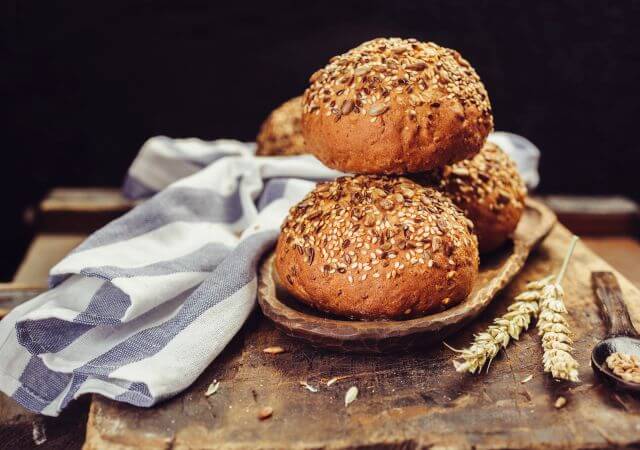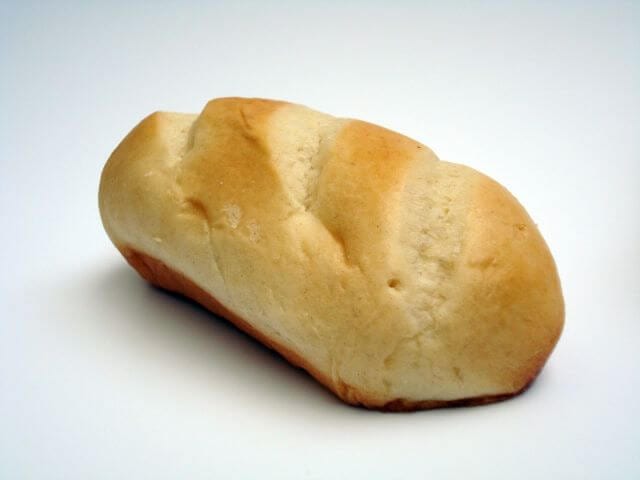Similar to breads, the selection of rolls is almost endless. It is estimated at about 1200 different varieties. At the bakery counter, you will encounter a wide variety of bread rolls. Here is an overview of what I consider to be the five most important varieties.
Weat morning roll

einfaches Brötchen 
Weizenbrötchen
It is the best known and most sold. The distinctive cross-section increases the surface area and therefore the crust. It can be found in every German supermarket and bakery. The flour content is at least 90% wheat flour, the remaining ingredients are water, (possibly) sugar and yeast. This type of bread is also best served with a thin layer of butter to the Mett / Hackepeter.
It weighs an average of 50g at about 140kcal.
If you want to buy exactly this roll at the bakery, you say to the saleswoman: “I would like a plain roll”.
Rye roll

Unlike bread, here in the flour must only reach or exceed a proportion of at least 50% rye flour.
Multigrain roll

Another popular type of bread, which provides a little variety on the breakfast table. Must be processed at least one type of bread cereal and 2 other cereals whose share must be at least 5% each.
Milk roll

A soft special form is the milk roll. Additional ingredients here are relatively much sugar, milk and egg. It is very soft and fluffy, is particularly suitable for e.g. Nutella.
Poppy seed roll

Hier wird ein süßes Weizenbrötchen auf der Oberfläche mit Wasser befeuchtet und anschließend in Mohn gesteckt. So entsteht bäckt sich eine kräftige Mohnschicht mit einem unverwechselbar einzigartigem Geschmack fest. Es passt hervorragend mit Butter zu allen gängigen Wurst- und Käsesorten.
Other names of the German bun
Bavarian: Semmeln
Berlin: Schrippen
Swabian: Wecken
Lower Saxony: Rundstücke
Franconia: Weggla
